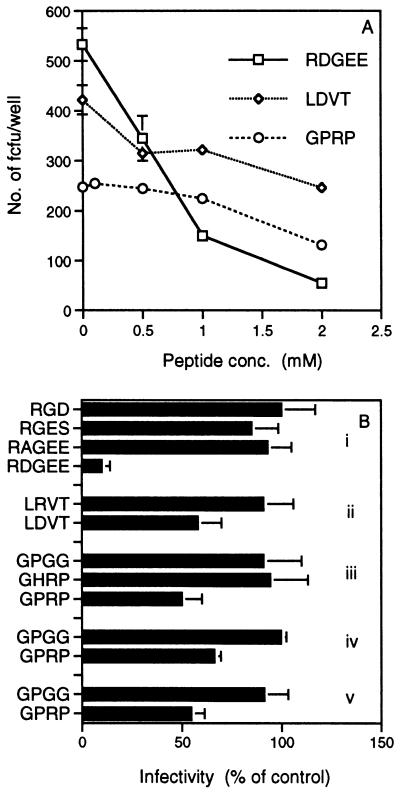Figure 4.
Inhibition of SA11 and RV-5 rotavirus infection of cells by synthetic peptides that correspond to VP4 and VP7 sequences and contain integrin recognition sites. Values plotted are the mean of three replicates from a representative experiment. Error bars show the SEM. Many error bars are too small to be visible on the graphs. Each experiment was repeated at least three times and gave similar results. (A) Dose-dependent inhibition of SA11 infectivity by RDGEE, LDVT, and GPRP. Results (y axis) are expressed as the number of fluorescent cell-forming units (fcfu) per well. Each fluorescent cell-forming unit is assumed to result from infection of a cell with a single virus particle. Negative control peptides tested are listed in B. At each peptide concentration, counts of negative control peptide fluorescent cell-forming units per well varied by less than 5% from the zero peptide count. (B) Peptides RDGEE, LDVT, and GPRP, but not sequence-related control peptides, inhibited virus infectivity. Data are shown for peptides at a concentration of 2 mM. The number of fluorescent cell-forming units in virus-infected wells not treated with any peptide represents 100% infectivity. (i–iii) SA11 in MA104 cells. (iv) RV-5 in MA104 cells. (v) RV-5 in Caco-2 cells.

